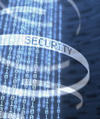« Previous 1 2 3
Encrypting files
Safe Files
The revelations of Edward Snowden caused a big upsurge in the use of encryption for protecting data from inappropriate access. People are now using encrypted filesystems as well as self-encrypting devices (SEDs). However, not everyone is using encryption.
Recent revelations about accessing the data of individuals include the story about how the NSA and Britain's Government Communications Headquarters (GHCQ) supposedly gained access to SIM cards [1] from Gemalto, allowing them to access any cell phone communications that used these cards. Another story talks about how Lenovo installed malware [2] on its laptops that allows the software to steal web traffic using man-in-the-middle attacks.
When you use an encrypted filesystem or SEDs [3], all of the data is encrypted. However, if you forget the password, you lose all of the data on the filesystem or drive. It may be easier to encrypt files individually so that if you forget the password, you only lose a single file and not the entire filesystem or drive. Moreover, you might be casually copying your files to the cloud or other backup systems from your desktop, laptop, or cellphone. If you do not encrypt these files yourself, more likely than not, these files are not encrypted.
Using simple tools to encrypt files individually and then copy them to your backup is an easy process. As previously mentioned, by encrypting the files individually, if you forget the password, then theoretically you will lose only a single file (unless you use the same passphrase for all files, in which case you might lose access to all data).
Before you read the rest of this article, note that I'm not a security or cryptography expert, nor do I play one on TV. Please do your own research. That said, in the sections below, I review a few file
...Buy this article as PDF
(incl. VAT)
Buy ADMIN Magazine
Subscribe to our ADMIN Newsletters
Subscribe to our Linux Newsletters
Find Linux and Open Source Jobs
Most Popular
Support Our Work
ADMIN content is made possible with support from readers like you. Please consider contributing when you've found an article to be beneficial.






